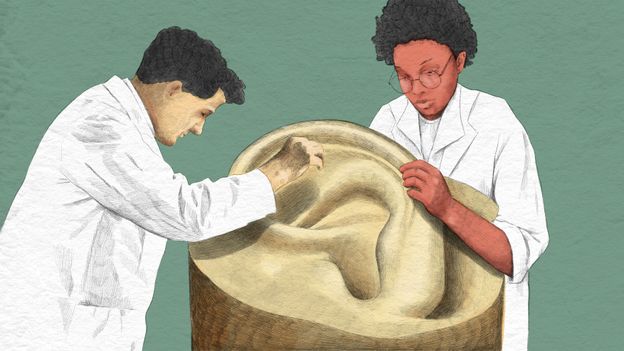Decoding Your Earwax: What It Says About Your Health & Potential Disease Risks

We often view earwax as a nuisance, something to be cleaned out and forgotten. But what if this seemingly insignificant substance holds a wealth of information about your overall health? Recent scientific advancements suggest that earwax, or cerumen, could be a surprisingly valuable diagnostic tool, offering insights into potential diseases and even providing a non-invasive method for early detection.
The Chemical Composition of Earwax: More Than Just Wax
Earwax isn't just a sticky substance; it's a complex mixture of secretions from the ceruminous and sebaceous glands in your ear canal. It comprises dead skin cells, hair, and a cocktail of chemicals including lipids, fatty acids, and cholesterol. Crucially, these chemical compounds can be influenced by a person’s diet, lifestyle, and even their underlying health conditions. This is where the groundbreaking research comes in.
How Scientists Are Analyzing Earwax
Researchers are using sophisticated analytical techniques, such as mass spectrometry, to analyze the chemical profile of earwax. This allows them to identify and quantify the various compounds present. By comparing the chemical signatures of earwax from healthy individuals with those experiencing specific health problems, scientists are building a database of biomarkers – specific substances that indicate the presence of a disease.
What Diseases Can Earwax Help Detect?
The potential applications are vast and exciting. Early studies have shown promising results in detecting:
- Diabetes: Changes in earwax lipid composition have been linked to blood sugar levels, potentially offering a non-invasive way to monitor the disease.
- Cardiovascular Disease: Certain fatty acids in earwax can indicate a higher risk of heart disease.
- Kidney Disease: Researchers are exploring links between earwax composition and kidney function.
- Stress and Mental Health: Stress hormones like cortisol can be detected in earwax, providing a window into a person's stress levels.
- Certain Cancers: Some studies suggest that changes in earwax metabolites may be associated with the presence of cancer.
The Future of Earwax Diagnostics
While the research is still in its early stages, the potential for earwax diagnostics is significant. Imagine a future where a simple earwax sample could provide valuable insights into your health, allowing for earlier detection and intervention. This non-invasive approach could revolutionize healthcare, particularly for those who find blood tests or other diagnostic procedures uncomfortable or inconvenient.
Important Considerations
It's crucial to remember that earwax analysis is not a replacement for traditional diagnostic methods. It's a developing field, and further research is needed to validate these findings and establish reliable diagnostic tests. Furthermore, individual variations in earwax composition can occur, and factors like diet and environment can influence the results. Always consult with a healthcare professional for any health concerns.
So, the next time you're cleaning your ears, remember that this often-overlooked substance might be silently communicating valuable information about your health. The science is evolving, and the future of earwax diagnostics looks increasingly promising.






